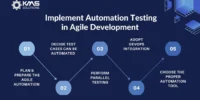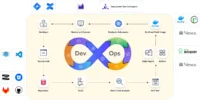Embracing GraphQL in your API development journey can be a game-changer, offering flexibility and efficiency in data retrieval. In this guidebook, we’ll explore quick tips to help you seamlessly implement GraphQL in your APIs, unlocking the full potential of this powerful query language.
1. Understanding GraphQL Basics
Before diving in, ensure a solid understanding of GraphQL fundamentals. Unlike traditional REST APIs, GraphQL allows clients to request only the data they need, reducing over-fetching and under-fetching issues. Familiarize yourself with GraphQL schemas, queries, mutations, and resolvers.
2. Designing a Robust Schema ️
The heart of GraphQL lies in its schema. Design a clear and efficient schema that reflects your data structure. Leverage types, queries, and mutations to define the interactions clients can have with your API. A well-designed schema simplifies client-server communication.
3. Optimizing Queries for Efficiency ⚡
Efficiency is key in GraphQL. Optimize queries to retrieve only the necessary data. Utilize query parameters, aliases, and fragments to tailor responses to specific use cases. This not only improves performance but also enhances the overall user experience.
4. Handle Data with Resolvers
Resolvers act as the bridge between the schema and the data source. Implement resolvers to fetch and return data based on client queries. Ensure resolvers are designed to handle various data retrieval scenarios, supporting the flexibility offered by GraphQL.
5. Implementing Mutations for Data Changes ✏️
For data modifications, mutations come into play. Design mutations to handle create, update, and delete operations. Follow best practices, such as providing clear and descriptive names for mutations, and use input types to streamline data input.
6. Managing Security Considerations
Security is paramount in API development. Implement proper authentication and authorization mechanisms. Validate and sanitize inputs to prevent potential vulnerabilities. Stay informed about GraphQL security best practices to protect your API from common threats.
7. Utilize GraphQL Tooling for Development
Take advantage of GraphQL tooling to streamline development. Tools like GraphQL Playground, Apollo Client, and GraphiQL provide interactive environments for testing queries and mutations. Use introspection to explore the capabilities of your GraphQL API.
8. Embrace GraphQL Subscriptions
Enhance real-time functionality by incorporating GraphQL subscriptions. Subscriptions enable server-to-client communication over WebSockets, allowing clients to receive real-time updates. Implement subscriptions for scenarios where live data updates are critical.
9. Versioning and Documentation
Plan for versioning from the start to accommodate future changes. Clearly document your GraphQL API, including schema definitions, queries, mutations, and any custom directives. Comprehensive documentation is invaluable for developers interacting with your API.
10. Monitoring and Performance Optimization
Implement monitoring tools to track the performance of your GraphQL API. Identify and address bottlenecks proactively. Optimize queries, resolvers, and data fetching to ensure optimal response times, especially as your API scales.
Conclusion: Elevate Your API with GraphQL Mastery
By incorporating these quick tips, you’re on your way to mastering GraphQL in your API development endeavors. Whether you’re building a new API or transitioning from REST, GraphQL’s flexibility and efficiency offer a new paradigm for data communication. Elevate your API development by embracing the power of GraphQL!








